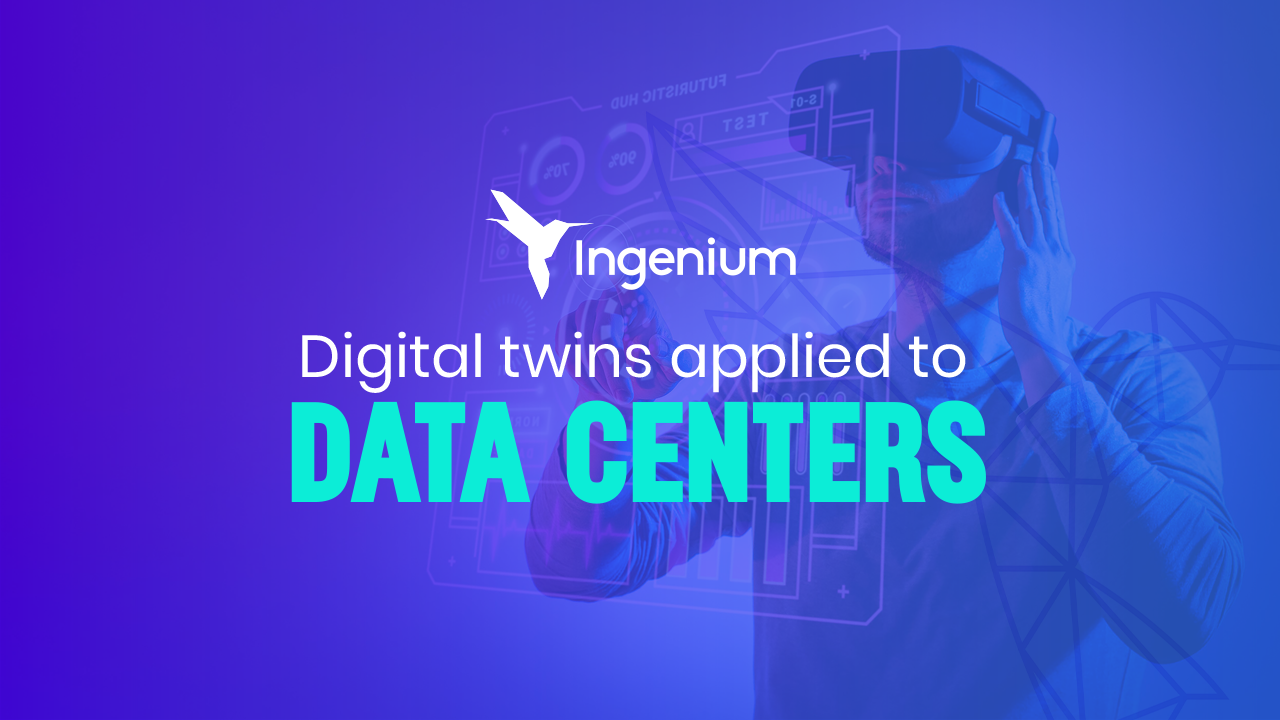By Fernando García
MD IDP Data Centers
The world around us depends on increasingly complex systems. Airports, factories, refineries, logistics warehouses, and data centers are critical systems whose real-time operation is extremely sophisticated. Our dependence on these systems is increasing and any disruption can affect the lives of millions of people.
Increasingly, these physical systems rely on digital systems that allow to reinforce the operation and maintenance capabilities through virtual representations that allow not only to visualize and monitor in real time what is happening, but to simulate, control and operate these infrastructures assisted by virtual or augmented reality systems. These simulators are what we call digital twins.
In the same way that an airplane pilot must train for thousands of hours with flight simulators before operating an aircraft, today, critical infrastructure operators have the possibility of training using digital twins to learn how to operate in normal or emergency mode, how to perform maintenance routines, or how to update the configuration of these systems for different needs. They are, in short, simulators that allow us to train our reflexes in emergency situations, or simply facilitate daily operation.
The use of digital twins in the operation and maintenance of data centers will expand in the coming years due to numerous factors that are affecting the industry in a fundamental way.
Driving factors in the use of Digital Twins
-
Quantity, dispersion, and complexity of data center infrastructure
The rise of hyperscale data centers, while multiplying edge data centers, requires operating and maintaining many sites, distributed throughout the geography and increasingly complex. The same operation and maintenance team is usually in charge of multiple sites, with a heterogeneous mix of equipment from different manufacturers installed in different topologies and configurations. Digital twins are well-calibrated replicas of each of these systems that can be managed in an aggregated and individual way from a centralized point.
-
Lack of qualified personnel in data centers
A data center is a system that combines all engineering disciplines: civil, electrical, mechanical, computer science, telecommunications. One of the most important challenges facing the industry is the lack of qualified personnel in several of these disciplines. Digital twins will speed up training just like flight simulators and simplify operation and maintenance using engineers who do not need to be experts in each of the disciplines. Another challenge that digital twins will solve is the coordination and programming of maintenance and operation between the different disciplines to avoid unwanted stops.
-
Data Center Security
Operating the electrical systems of data centers can be very risky due to the amount of energy consumed at these sites. It is not uncommon to hear about large arc flash explosions on electrical panels, or deadly electrocutions from not wearing proper protective equipment or following safety procedures. The digital twins will allow security procedures to be trained on an exact replica of our infrastructure, and in the future, we will be able to perform operations remotely through virtual reality systems without risking the lives of operators.
-
Operational efficiency
The profitability of data centers is directly proportional to operational efficiency. This operational efficiency depends on energy consumption, the number of dedicated personnel, equipment maintenance contracts, maximization of resources and reduction of idle capacity. Digital twins can bring a lot of value in all these aspects of operational efficiency by helping to simulate different operating scenarios, fine-tuning, and coordinating the configuration of each equipment and in an aggregate way, reducing the number of dedicated personnel, and allowing to identify idle capacity.
Digital twins are much more than 3D replicas of our infrastructure. It is a database with digital models of each of the elements and components that make up the data center, and that have complete information on their characteristics, behaviors, configurations, and interdependencies. So far, they would be passive models, but if we also instrumentalize the data center and provide it with sensors and IOT devices that allow us to be calibrating in real time all the important variables, we will have a model faithful to reality, that through virtual and augmented reality systems, allows us to operate and control the data center to maximize operational efficiency. Reduce security risks, and ultimately ensure maximum availability.
To obtain the digital twin of the data center, it is essential to start the process in its design and construction stage, obtaining as output of this stage the as-built in BIM in 3D, as well as all the instrumentalization that will feed us with data in real time, and that will be the basis of the digital twin to be used in the next phase of operation and maintenance of the infrastructure.
Ingenium, leading firm in Data Center projects in Latin America, recently partnered with IDPa pioneer and leader in the use of BIM methodologies in Spain, which has implemented more than 200 Digital Twins in different industries and applications. Together we potentiate your projects! Contact us.



